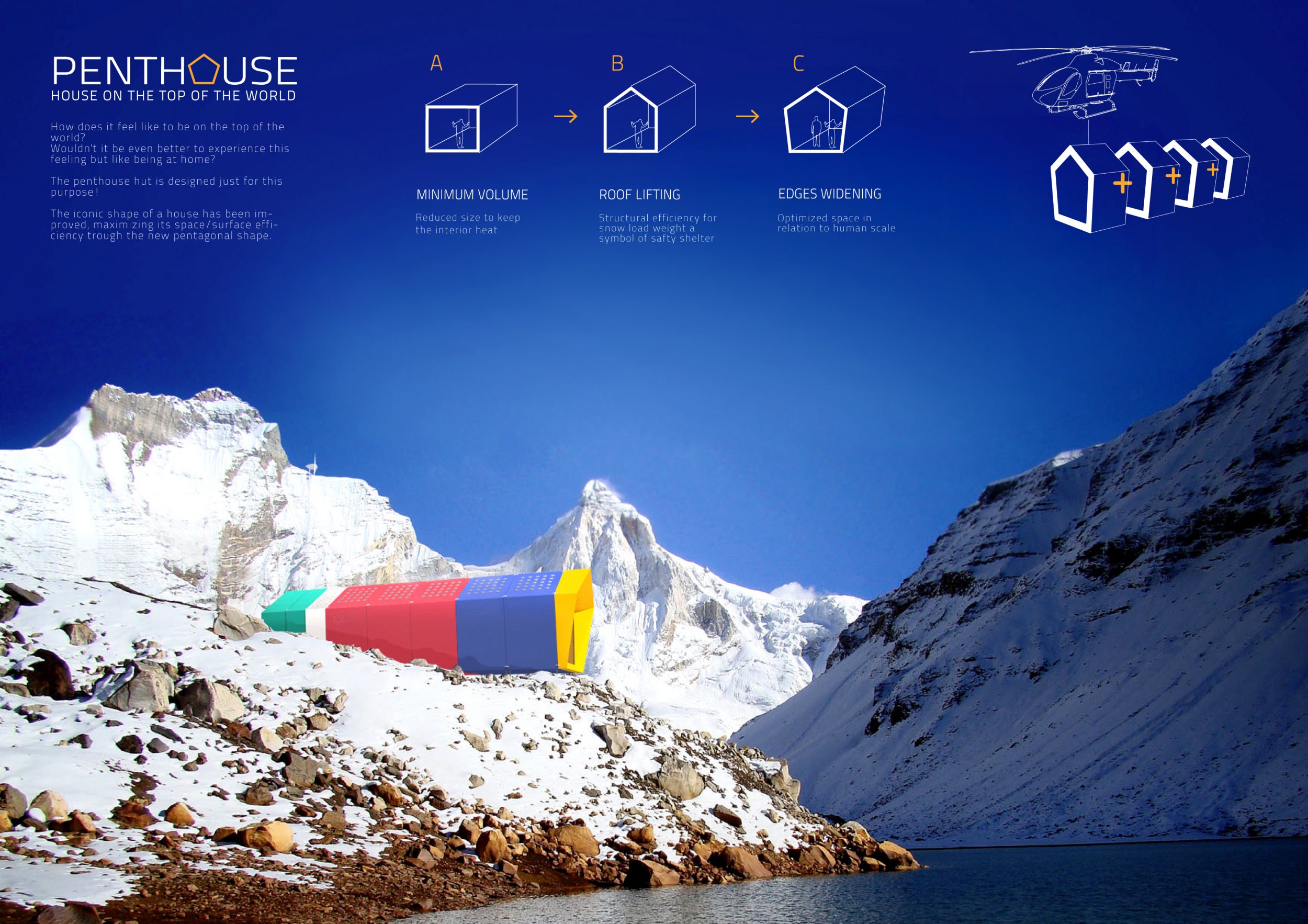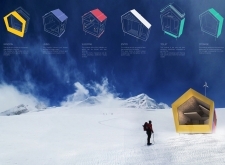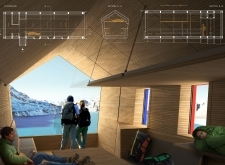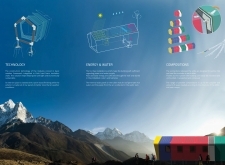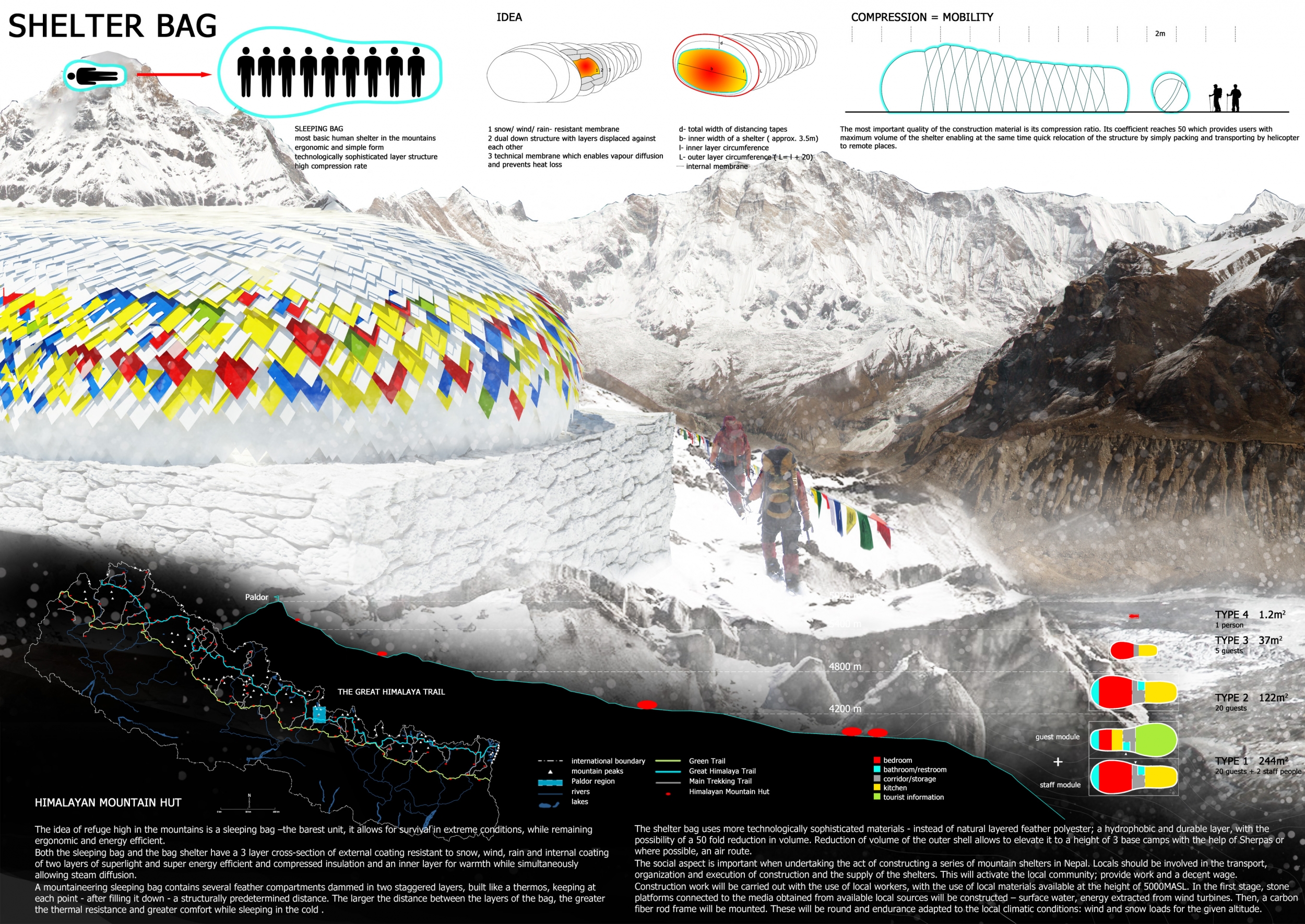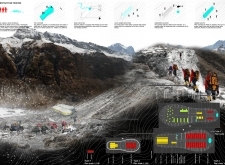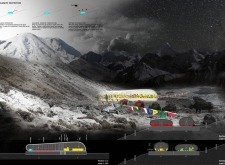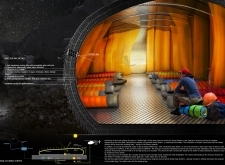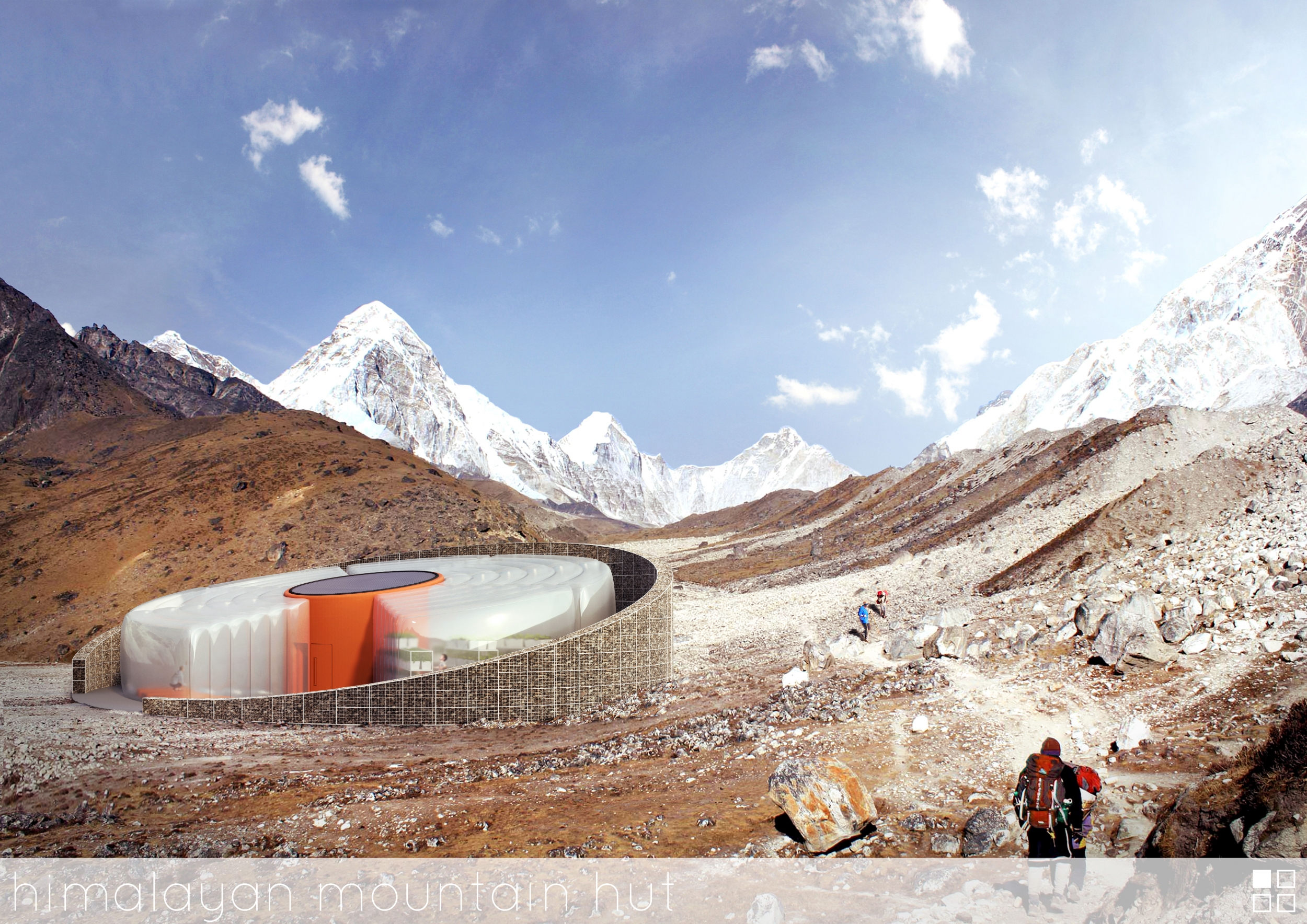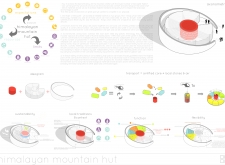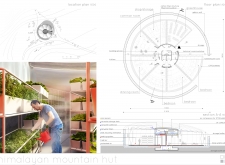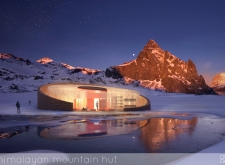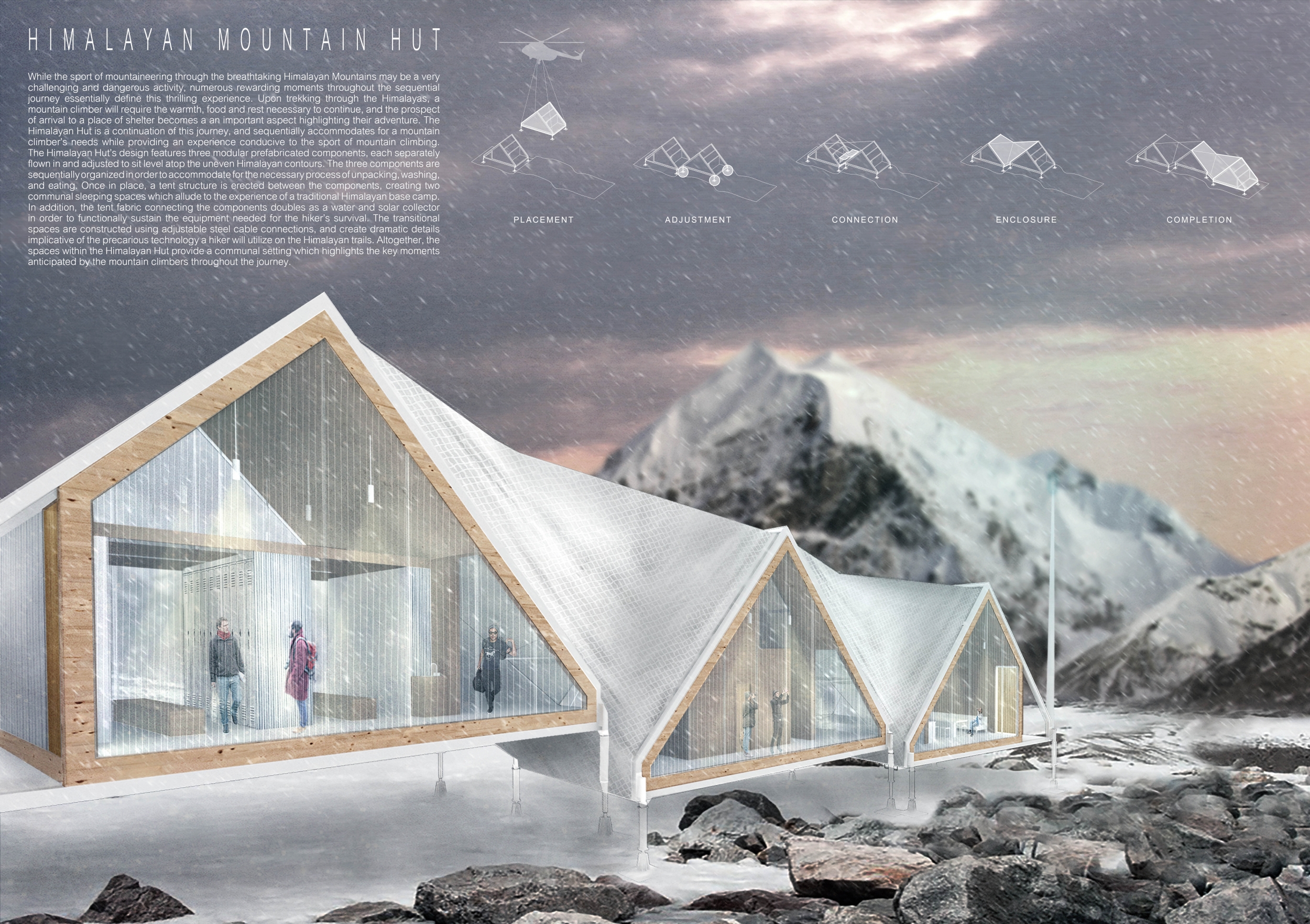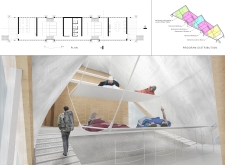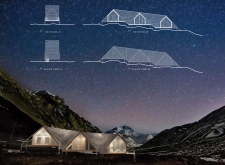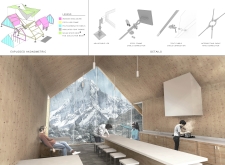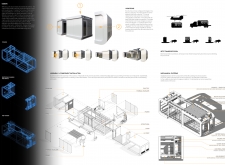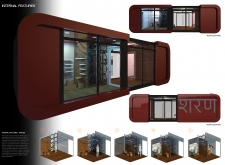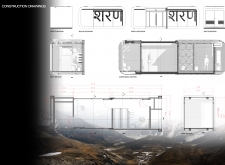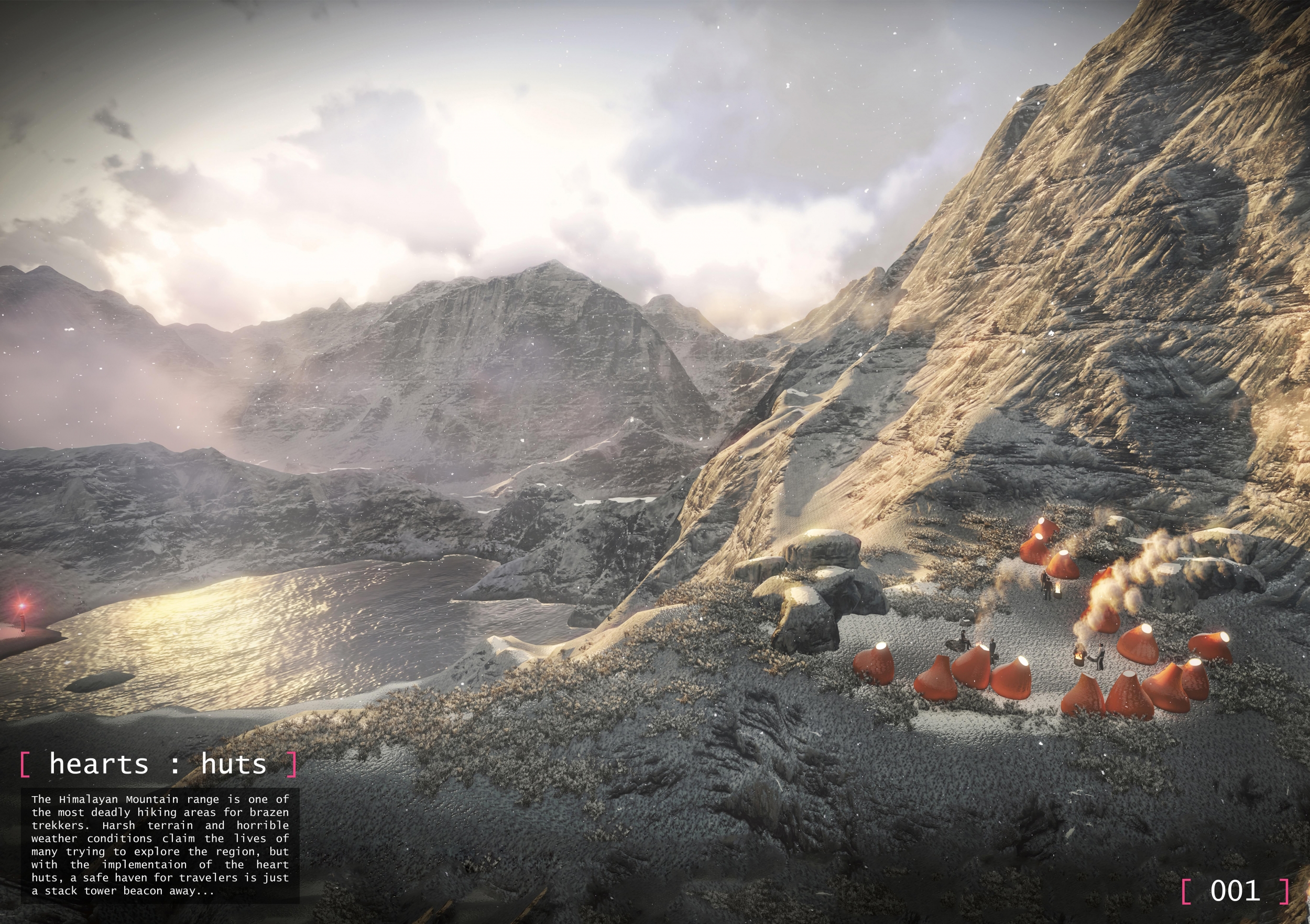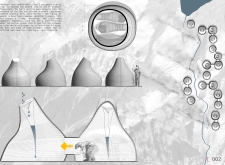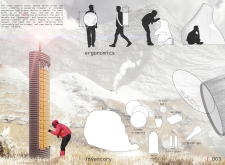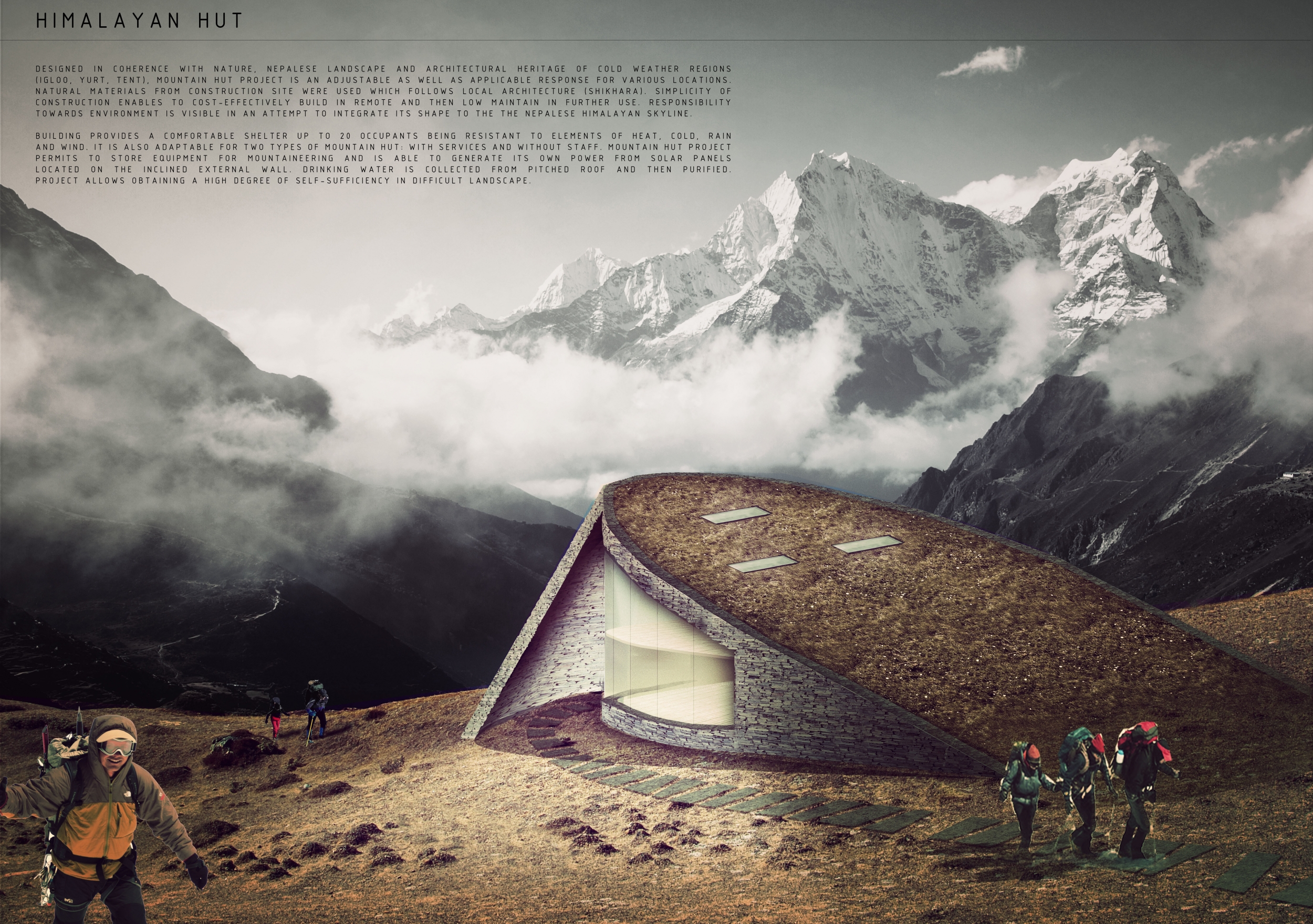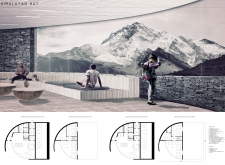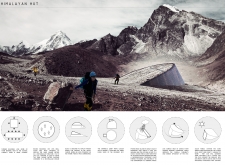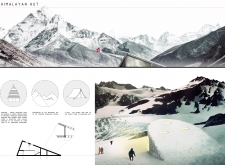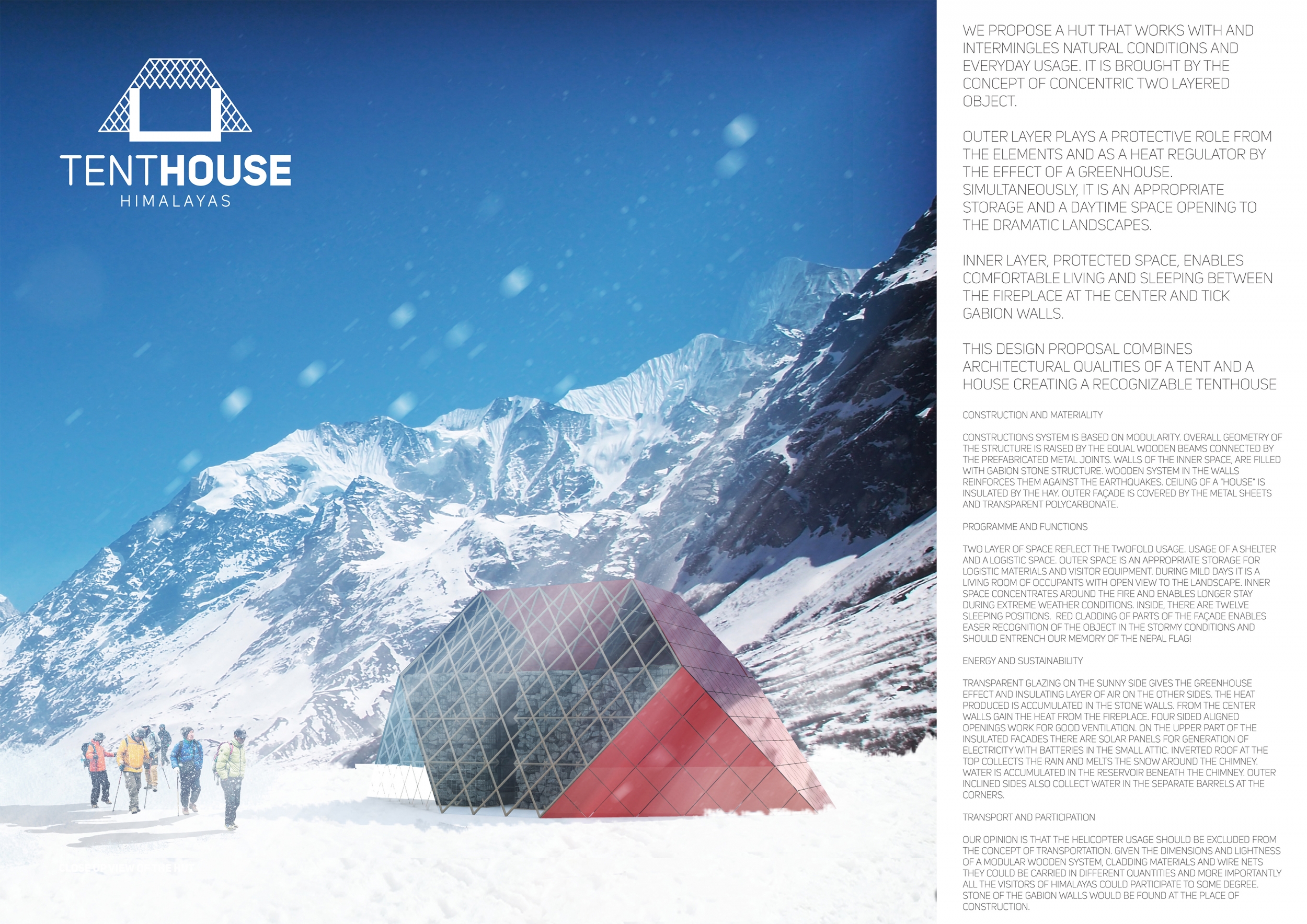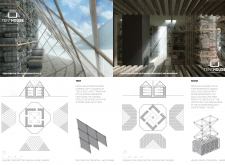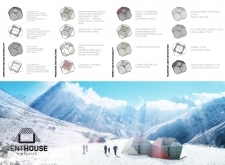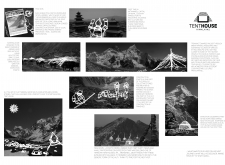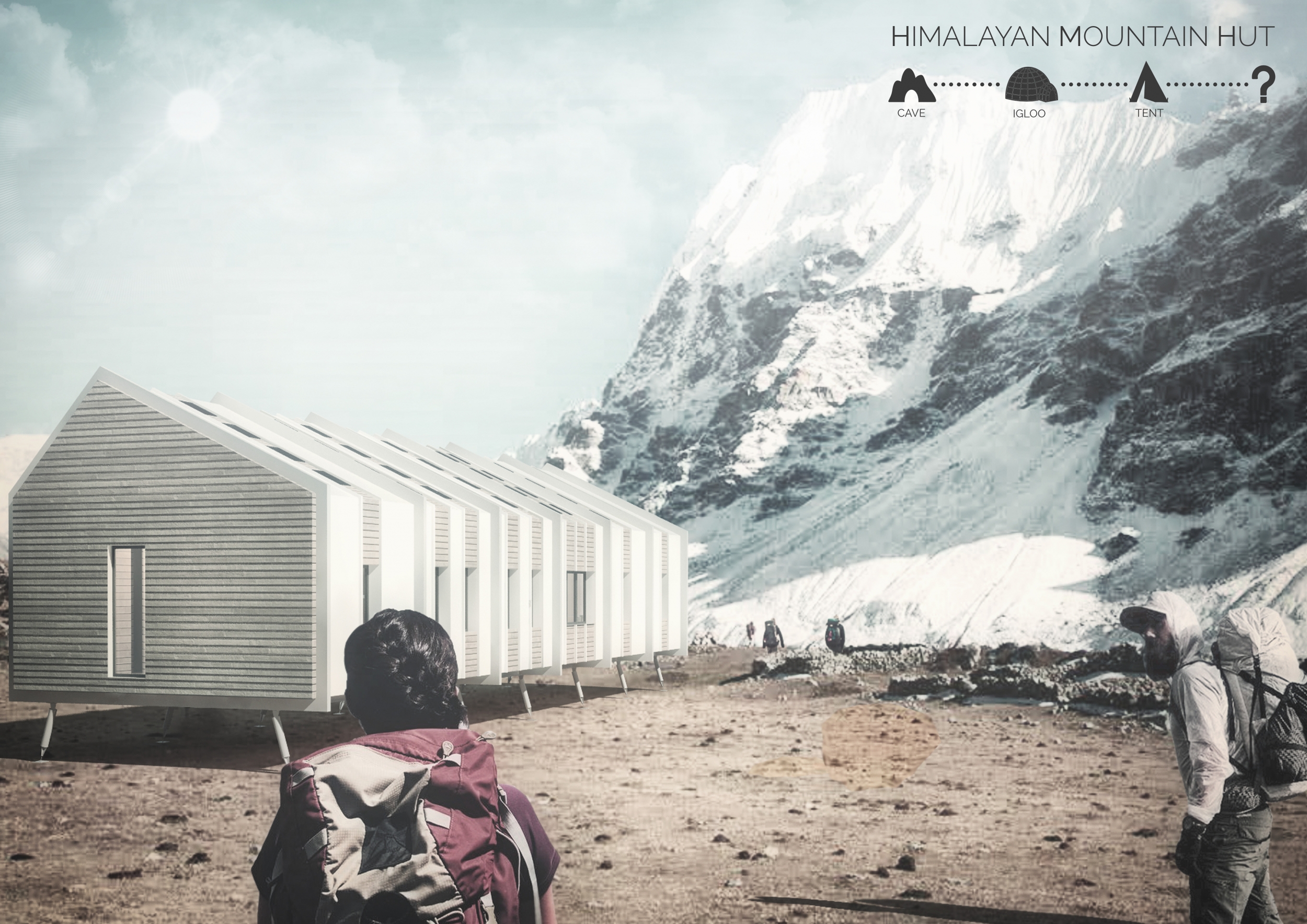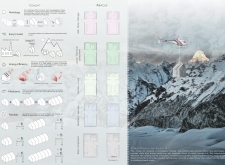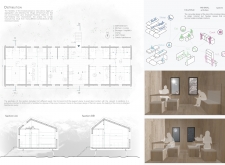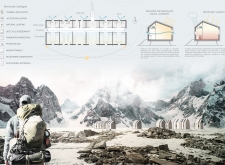Introduction
Rising from the basic human need for shelter in an unforgiving climate, the Himalayan Mountain Hut carries the potential to house mountaineering expeditions throughout the trails of Nepal. The quality of submissions for the competition was quite high, and the judges were presented with a wide variety of solutions, ranging from simple tent communes to vast multi-level hospitality structures.
Each entry was evaluated on a number of criteria, including but not limited to: strength and clarity of concept, originality, quality of presentation, appropriateness to context, and most importantly, its constructability and efficiency at a remote site with an extreme climate. Although a Himalayan Mountain Hut is primarily for shelter during long treks, the judges placed additional focus on the hut's ability to serve the culture and community of mountaineering. Successful proposals were not only buildable, affordable, efficient with systems, and efficient with transport, but they also incorporated comfortable sleeping arrangements and a potential gathering space to replace and/or supplement the traditional camp fire, around which stories are shared and bonds are made. While isolated in extreme climates, one's humanity becomes an important component in surviving nature's perils, and successful entries embraced the idea of gathering for weary trekkers.
Additionally, the careful study employed for these mountain huts is now more relevant than ever given the recent devastating earthquake in Nepal (for more information about how you can help visit Global Giving). These proposals are thusly viewed as a series of case studies that could potentially be adopted for the more wide-spread rebuild program of Nepal.
Competition results in media publications
1st Prize Winner
Jury feedback summary
The chosen winner successfully integrated the project’s unique program and constraints into an affordable and elegant solution fitting to the site. As called for in the competition guidelines, this solution is extremely adaptable, and may be easily adjusted for variable sites, altitudes, and number of occupants. It employs a modular system that can be clipped together, comprised of a series of pre-fabricated module ‘types’ such as living, sleeping, service, etc.
2nd Prize Winner
Jury feedback summary
This project is provocative in incorporating the unexpected yet highly relevant mountaineering typologies of the tent and sleeping bag. These two key shelters are a must for any expedition, and as such are a relevant base point for a project with these requirements. The structure successfully blends the two typologies by using the light carbon poles of a tent covered by the thermally-insulating shell of a sleeping bag.
3rd Prize Winner
Jury feedback summary
The third place entry exhibits a provocative combination of technology and local resources in the proposed solution. The use of light-weight ETFE pillows is contrasted with the mass of gabion walls around the perimeter, which presents a nice balance between rustic elements specific to the place with elements of a more ethereal and technological nature.





